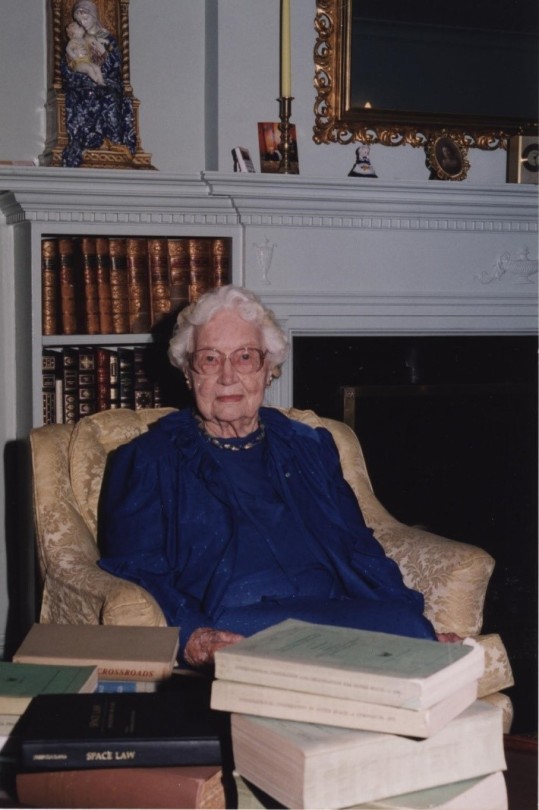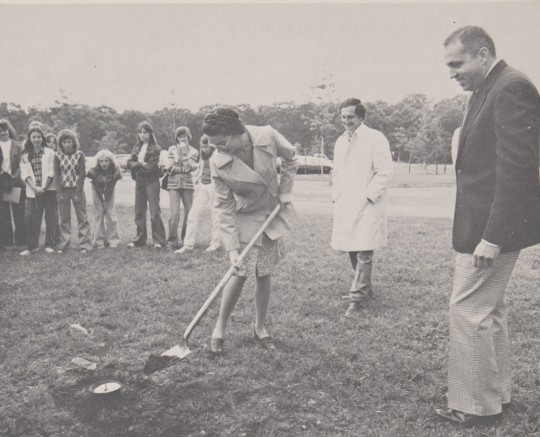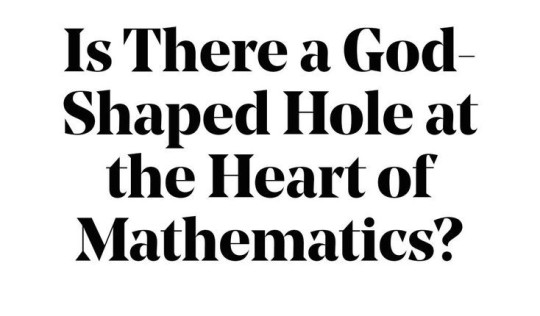#Maths And Science
Explore tagged Tumblr posts
Text
GUYS GUYS GUYS I GOT INTO THE SCHOOL I APPLIED TO
5 notes
·
View notes
Text
alright nerds--
^tried to include as many as possible
#studyblr#polls#tumblr polls#academics#academic polls#studyblr polls#studying#learning#college#university#academic#language#langblr#archaeology#anthropology#sociology#psychologoy#psych#medblr#history#forensics#csi#math#physics#mathblr#mathematics#computer science#science#compsci#biology
1K notes
·
View notes
Text


new oc ive been rotating in my head for a couple days... ill call her fishgirl untill i come up with something better
1K notes
·
View notes
Text

Reblogging this drawing with the Timelapse because I finally figured out how to add those and I think it’s cool
Took me about 60 hours which is CRAZY,, I call this one The Quark Family when I’m talking about it (which seems apt) and I’ve literally crammed so many references and details and hours into this my life feels so empty without it. Tumblr is butchering the image quality but that’s just what it is ig,,, I’ve tried and I can’t seem to fix it
Progress shots and closeups under the cut (and a full list of the references and stuff I crammed in in the tags bc I have to know that they’re all noticed)





#we’re looking through their mirror btw in case that doesn’t come across#gonna be a lot of tags sorry for that#Some of these little details may be incredibly obv or not super subtle anyway but I wanna be thorough#the posters on the wall are the 2 ferengi tv shows boimler watches in ld#btwn them is nog’s old report card#he’s got a c- in history a b in bajoran an a+ in math (bc he’s good w engineering) and c’s in science and math#the note on the side says “nog is a great kid but he needs to do his homework -KO”#there’s nail polish everywhere bc obv#top shelf odo is hiding in a bottle spying on quark next to the rules of acquisition#middle shelf are quark’s action figures that moogie gave him#the yellow one is doing a sailor moon pose#ds9 snow globe and baseball cap next to baseball on last shelf bc they’re obsessed#there’s a baseball bat agains the chair too#the torn poster next to nog is a vic fontaine poster quark tore down bc he won’t advertise the enemy#the paper on the table is a spreadsheet detailing quark’s current purchase/sales on yamok sauce (yes ik they don’t use paper)#the cups/bottles are root beer raktajink and sluggo cola (from ld) respectively#on the shelf btwn quark and not there’s one of those golden ferengi busts quark prays to#next to it the three bottles are romulan ale kanar and bajoran spring wine respectively#the rug IS the trans flag in case you were wondering bc ds9 canonically has trans carpets it only makes sense#leeta has a bottle of prophets perfume#the eyeshadow pallete on the table in front of them is quark’s#the papers by that are profit assessments for the bar for the week#rom has a bottle of tooth polish#rom and nog are both wearing bajoran earrings bc leeta#now that I’m typing this all out I have so many other references and details that I wish I added in#quark#rom#leeta#nog#jake sisko
943 notes
·
View notes
Text
« "Oh, I've always sucked at maths!"
I’m getting a little blasé. This must be at least the tenth time I’ve heard that remark today.
Yet this lady has been here at my stall for a good fifteen minutes, standing with a group of other passersby, listening attentively while I describe various geometrical curiosities. That’s how the conversation started.
"But what do you do for a living?" she asked me.
"I’m a mathematician."
"Oh, I've always sucked at maths myself!"
"Really? But you seemed to be interested in what I was just talking about."
"Yes… but that’s not really maths… that was understandable."
I hadn’t heard that one before. Is mathematics, by definition, a discipline that can’t be understood?
It’s the beginning of August, in [...] La Flotte-en-Ré, France. In [the] small summer market, I have a pop-up – there is henna tattooing and afro braids to my right, a mobile-phone accessory stall to my left, and a display of jewels and trinkets of all kinds opposite me. I’ve set up my maths stand in the middle of all this. Holidaymakers stroll peacefully by in the cool of the evening. I particularly like doing maths in unusual places. Where people aren’t expecting it. Where they are not on their guard…
"Can’t wait to tell my parents I did some maths during the holidays!" a high school kid says to me, after stopping by my stall on his way back from the beach.
I do have to catch them unawares. But you’ve got to do what you’ve got to do. This is one of my favourite moments: observing the expression on the faces of people who thought that they had fallen out with maths for good at the instant when I tell them that they have just been doing maths for fifteen minutes. And my stall is always crowded! [...]
No matter how much this amuses me, on balance I find it upsetting. How has it come about that we need to hide from people the fact that they are doing maths before they can take some pleasure in it? Why is the word so frightening? One thing is certain: had I put up a sign above my table proclaiming ‘Mathematics’ as visibly as ‘Jewels and necklaces’, ‘Phones’ or ‘Tattooing’ on the stalls around me, I would not have had a quarter of the same success. People would not have stopped. Perhaps they would even have turned away and averted their gaze.
And yet, the curiosity is there. I observe this every day. Mathematics may scare people, but it also fascinates. Many, who don't like it, would like to like it—or at least to be able to peep at will into its murky mysteries. Many think it is inaccessible. But this is not true. It is perfectly possible to love music without being a musician, or to like to share a nice meal without being a great cook. Then why should you have to be a mathematician, or someone exceptionally clever, in order to be open to hearing about mathematics and to enjoy having your imagination tickled by algebra or geometry? It is not necessary to delve into the technical details in order to understand the great ideas and to be able to marvel at them. »
— Mickaël Launay, It All Adds Up: Humans and Mathematics From Prehistory to Modern Day
992 notes
·
View notes
Text
Most now-generalized counting terms once had exact meanings, here are a few:
Single - 1
Couple - 2
Few - 3 or 4
Several - 5 or 6
Lots - 7-11 but not 9
Nine - 9 (antiquated)
Dozen - 12
Baker's Dozen - 13
Candlestick Maker's Dozen - 14 or 15
Like At Least Twenty - 16 to 18
Thousands Upon Thousands - 19
Infinite - 20 or More
This is because in the early times of language, we counted on our fingers and toes, of which we have an infinite amount.
789 notes
·
View notes
Text

437 notes
·
View notes
Text

Research for Gaza & Sudan
Hello everyone, this is my attempt in helping Raise funds for 3 campaigns that are in dire need and are extremely low on funds.
What I can do:
I am a physics major & have access to neat software such as HyperChem & Gaussian 09 and know how to use both efficiently. I can help build & do the necessary calculations for your modules. I can help you find resources for your research, and I am open to doing math and/or physics homework, as well.
How does this work?
DM me your requirements WITH CLEAR INSTRUCTIONS & a screenshot of your donations and I will start on it as soon as I can.
• For HyperChem & Gaussian 09: you need to donate €25 to each of the two gaza campaigns I have below.
I think this is a more than fair price given that licenses for both softwares range from 50$-2500$ (in the academics alone!)
• For searching resources: you need to donate €10 for the Sudanese campaign below.
• For homework: you need to donate €10 to any of the campaigns below.
NOTE: I am NOT responsible for Your deadlines. If your request needs time to run or I am doing someone else's commission before you, you WILL have to wait.
The campaigns:
Al-Najjar family - vetted here
Abdul Aziz's family - vetted here
ThomaSerena - vetted here & here
Sorry for the tags ♡
@commissions4aid-international @northgazaupdates2 @appsa @magnus-rhymes-with-swagness @wingedalpacacupcake @elksewer @a-shade-of-blue @tortiefrancis @mushroomjar @fromjannah @neechees @irhabiya @ibtisams @lacecap @dykesbat @socalgal @ankle-beez @mahoushojoe @transmutationisms @deepspaceboytoy @greelin @huckleberrycomics @zionistsinfilm @beserkerjewel @babacontainsmultitudes @spacebeyonce @mauesartetc @vakarians-babe @ghostofanonpast @c-u-c-koo-4-40k @ot3 @xinakwans @komsomolka @chilewithcarnage @akamanto0 @feluka @goodguydotmp3 @leotanaka @effen-draws @pkmnbutch @bilal-salah0 @ghostingarden
#research#dark academia#academic#academia#physics#math#science#hyperchem#gaussian blur#gaza strip#israel#sudan#sudan war#proxy war#sudan criss#sudan gofundme#evacuation#humanitarian aid#AcePR#chemistry#do your homework#software#gravity falls#Palestine#gaza#free gaza#free palestine
2K notes
·
View notes
Text
Regulus did NOT get the math autism
#i wanted tina to be remus at first but i couldn’t find enough good scenes of my remus fc so i pivoted#we live and we move on#i do hc that sirius is really really good at math and science and shit#meanwhile math problems feel like nails and needles being stabbed into the brain for regulus#his ass is not rain man#he got the gothic literature and history autism and sports autism#marauders#marauders fandom#marauders era#hp marauders#marauders headcanon#sirius black#james potter#peter pettigrew#marlene mckinnon#regulus black#regulus arcturus black#sirius orion black#james fleamont potter#dead gay wizards#harry potter#the black brothers#prongsfoot#padtail#jegulus#blackinnon#the most ancient and noble house of black#silly posting#bobs burgers#joke edit
343 notes
·
View notes
Text

LaRue Burbank, mathematician and computer, is just one of the many women who were instrumental to NASA missions.
4 Little Known Women Who Made Huge Contributions to NASA
Women have always played a significant role at NASA and its predecessor NACA, although for much of the agency’s history, they received neither the praise nor recognition that their contributions deserved. To celebrate Women’s History Month – and properly highlight some of the little-known women-led accomplishments of NASA’s early history – our archivists gathered the stories of four women whose work was critical to NASA’s success and paved the way for future generations.
LaRue Burbank: One of the Women Who Helped Land a Man on the Moon
LaRue Burbank was a trailblazing mathematician at NASA. Hired in 1954 at Langley Memorial Aeronautical Laboratory (now NASA’s Langley Research Center), she, like many other young women at NACA, the predecessor to NASA, had a bachelor's degree in mathematics. But unlike most, she also had a physics degree. For the next four years, she worked as a "human computer," conducting complex data analyses for engineers using calculators, slide rules, and other instruments. After NASA's founding, she continued this vital work for Project Mercury.
In 1962, she transferred to the newly established Manned Spacecraft Center (now NASA’s Johnson Space Center) in Houston, becoming one of the few female professionals and managers there. Her expertise in electronics engineering led her to develop critical display systems used by flight controllers in Mission Control to monitor spacecraft during missions. Her work on the Apollo missions was vital to achieving President Kennedy's goal of landing a man on the Moon.
Eilene Galloway: How NASA became… NASA

Eilene Galloway wasn't a NASA employee, but she played a huge role in its very creation. In 1957, after the Soviet Union launched Sputnik, Senator Richard Russell Jr. called on Galloway, an expert on the Atomic Energy Act, to write a report on the U.S. response to the space race. Initially, legislators aimed to essentially re-write the Atomic Energy Act to handle the U.S. space goals. However, Galloway argued that the existing military framework wouldn't suffice – a new agency was needed to oversee both military and civilian aspects of space exploration. This included not just defense, but also meteorology, communications, and international cooperation.
Her work on the National Aeronautics and Space Act ensured NASA had the power to accomplish all these goals, without limitations from the Department of Defense or restrictions on international agreements. Galloway is even to thank for the name "National Aeronautics and Space Administration", as initially NASA was to be called “National Aeronautics and Space Agency” which was deemed to not carry enough weight and status for the wide-ranging role that NASA was to fill.
Barbara Scott: The “Star Trek Nerd” Who Led Our Understanding of the Stars

A self-described "Star Trek nerd," Barbara Scott's passion for space wasn't steered toward engineering by her guidance counselor. But that didn't stop her! Fueled by her love of math and computer science, she landed at Goddard Spaceflight Center in 1977. One of the first women working on flight software, Barbara's coding skills became instrumental on missions like the International Ultraviolet Explorer (IUE) and the Thermal Canister Experiment on the Space Shuttle's STS-3. For the final decade of her impressive career, Scott managed the flight software for the iconic Hubble Space Telescope, a testament to her dedication to space exploration.
Dr. Claire Parkinson: An Early Pioneer in Climate Science Whose Work is Still Saving Lives

Dr. Claire Parkinson's love of math blossomed into a passion for climate science. Inspired by the Moon landing, and the fight for civil rights, she pursued a graduate degree in climatology. In 1978, her talents landed her at Goddard, where she continued her research on sea ice modeling. But Parkinson's impact goes beyond theory. She began analyzing satellite data, leading to a groundbreaking discovery: a decline in Arctic sea ice coverage between 1973 and 1987. This critical finding caught the attention of Senator Al Gore, highlighting the urgency of climate change.
Parkinson's leadership extended beyond research. As Project Scientist for the Aqua satellite, she championed making its data freely available. This real-time information has benefitted countless projects, from wildfire management to weather forecasting, even aiding in monitoring the COVID-19 pandemic. Parkinson's dedication to understanding sea ice patterns and the impact of climate change continues to be a valuable resource for our planet.
Make sure to follow us on Tumblr for your regular dose of space!
#NASA#space#tech#technology#womens history month#women in STEM#math#climate science#computer science
2K notes
·
View notes
Text









Joshua Moritz, 'Is There a God-Shaped Hole at the Heart of Mathematics?' // Bluepoch Games, Reverse 1999 // Li C. Tien, "Right Triangle" // Proclus Diadochus // @lothmoth // Lisa Rosenberg, "Introduction to Methods of Mathematical Physics" // Wassily Kadinsky, watercolour abstract // Albert Einstein // see 4
#theme: the beauty of mathematics#web weaving#webs#web weave#is this too niche#sorry people who hate maths#poetry#prose#aesthetic#prose poetry#literature#art#quotes#philosophy#mathematics#science#writing#poems#poems and poetry#parallels#compilation#reverse 1999#inspo#painting#book quotes#novels#maths
2K notes
·
View notes
Text
you either die a mathematician or live long enough to see yourself become a computer scientist
#math#computer science#mathblr#csblr#Chloe says something#my views on math have changed drastically the more I do cs stuff#and like what math is and what reality is
591 notes
·
View notes
Text
The American far-right: (((They))) built space lasers and hurricane machines to create natural disasters in the United States!
The American far-left: A country the size of New Jersey is single-handedly accelerating climate change to create natural disasters in the United States!
You guys sound exactly the same
#antisemitism#right wing antisemitism#left wing antisemitism#leftist antisemitism#american politics#current events#climate change#i dunno tankies I feel like your blorbos russia and china with their populations and landmasses and wars carry much of responsibility#for climate change#but what do I know I just have a basic grasp of math and science
846 notes
·
View notes
Text

This full binary tree branches out over 8 levels 🌿✨, stitched with stem stitch and dotted with French knot leaves. Who knew recursion could look so cute? Template in my blog description if you want to stitch your own!
#Also PSA that I have a tiktok and youtube now#I'm posting timelapses of making the pieces (starting with this one)#If you want some more maths embroidery on your respective feeds#math#math art#mathblr#embroidery#craft#fibre arts#science craft#yarnblr#fiber craft#math embroidery#threadedtheorems
199 notes
·
View notes
Text
It's so funny to me that people think of Math/Mathematicians as being hyper-logical and rational. Like, have you seen some of the wild things hiding in the Math?
Did you know there are non-computable numbers?? (https://en.wikipedia.org/wiki/Chaitin%27s_constant)
Did you know that there are things that are true, but we can't prove them??? (https://en.wikipedia.org/wiki/G%C3%B6del%27s_incompleteness_theorems)
Did you know that we can prove that something exists, and yet never actually figure out what that thing is?? (https://mathworld.wolfram.com/NonconstructiveProof.html)
Math is crazy. Math is wild. Math hardly makes sense, and when you think you understand the weirdest parts of it, everyone who hears you explain it to thinks you're a gibbering lunatic.
"In mathematics you don’t understand things. You just get used to them." - von Neumann
(please share more unhinged math with me, i want to see more scary math)
#stem#math#mathblr#academics#mathematics#logic#stemblr#academia#proofs#computer science#theoretical computer science
3K notes
·
View notes
Text

Indeed it does
#volumes#maths#science#shapes#geometry#studying#studyblr#insidesjoke#memes#funny#meme#humor blog#humour#dank memes#Twitter memes
204 notes
·
View notes